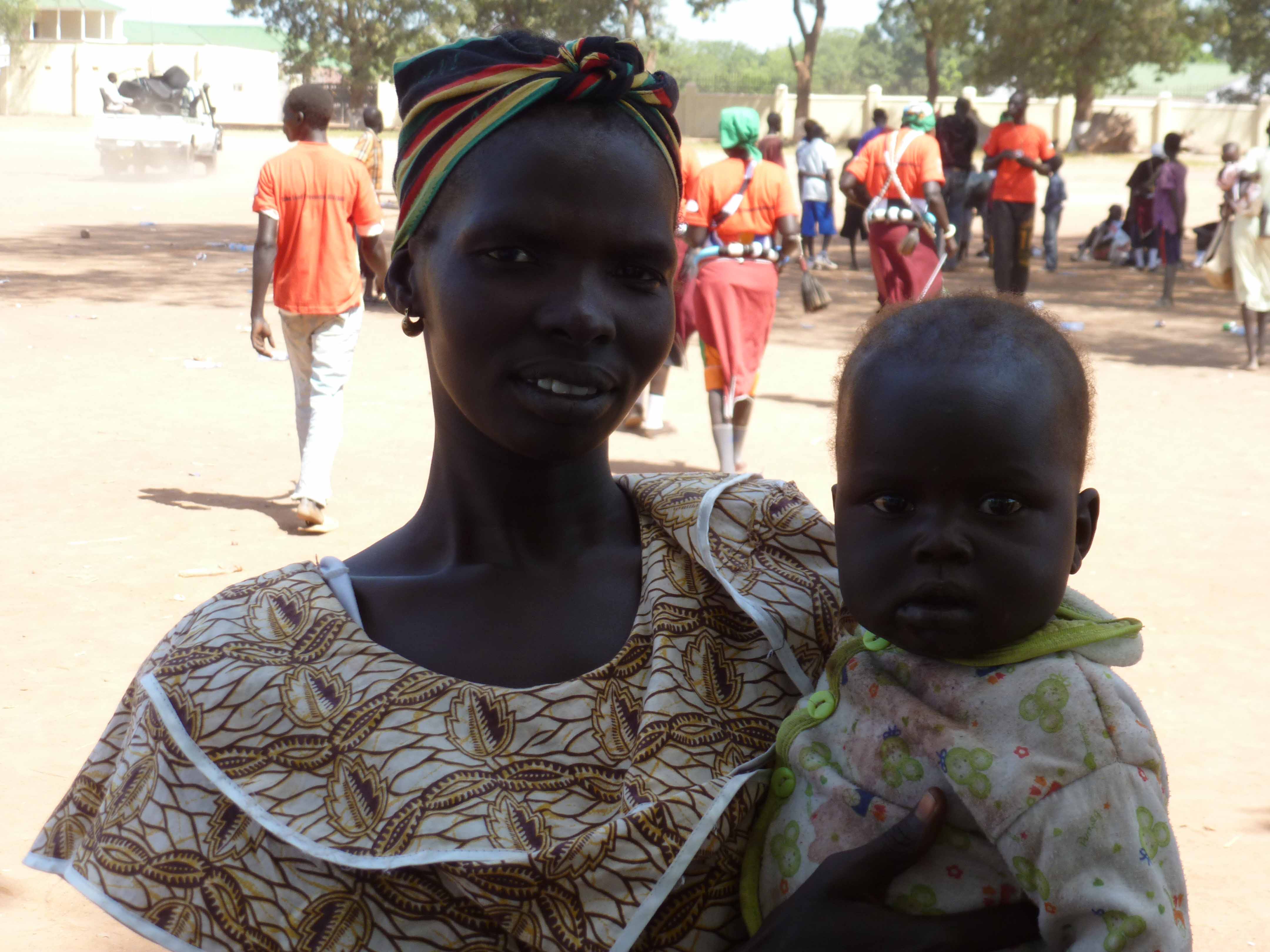
Why So Many Women in South Sudan Die Young
2013 – A woman in South Sudan has a one in seven chance of dying in childbirth. The nation has an astonishingly high maternal mortality rate of 2,054 maternal deaths per 100,000 live births. To put this in perspective, the maternal mortality rate in Ghana is 350 maternal deaths per 100,000 live births while the rate is only 21 maternal deaths per 100,000 live births in the United States.
According to Joy Mukaire, executive director of the Christian Health Association of Sudan (CHAS), a network of Christian healthcare providers, health training institutions and advocacy groups, there are a number of factors keeping women from planning pregnancies at times that would be optimal for their health, a critical strategy in reducing maternal deaths. The woman in the photo is a mother of 4 at the age of 23 years old. She came to attend a CHAS women’s meeting.
A major problem for women and girls is the common practice in South Sudan of early marriage, with girls as young as 13 years old marrying much older men, often becoming a second or third wife. There is currently no law to protect young girls from this practice or no minimum age to marry in the nation. These early marriages result in pregnancies before girls are physically mature, putting them at risk for obstructed labor and other complications. “South Sudan is a patriarchal society,” explains Mukaire. “This environment, coupled with strong cultural factors acts as a disincentive to the education of girls. The 2010 Sudan Household Health Survey revealed very low literacy rates, with only 11.8 percent of women and 36.8 percent of men aged 15 to 49 able to read and write. We have to continue to remind those in charge that the state has the legal obligation to respect, protect and fulfill the reproductive rights of women.”
Furthermore, Mukaire says the South Sudanese government is presently overwhelmed with competing social, political and economic development priorities, and there are no definite strategies to embrace the importance of ensuring that girls delay marriage and pregnancy and enroll and stay in primary education. As a result, young girls do not know how to delay pregnancy until their bodies are ready to carry and deliver a child, and even adult women in South Sudan have little knowledge of how to safely space pregnancies. (The 23-year-old South Sudanese woman pictured above has four children. She is attending a meeting for women sponsored by CHAS.)
Fortunately, the Ministry of Health recently approved the National Family Planning Policy to provide a framework and guidance for the development and delivery of family planning services that Mukaire hopes will lead to greater and more equitable access of services and improved quality and responsiveness to the family planning needs of all clients. “While the policy does not commit to full-fledged family planning advocacy and service goals, this is the first step to encouraging the political environment to recognize family planning as one of the major strategies in reducing a high maternal mortality rate,” explains Mukaire. Mukaire also believes family planning education and services are activities trusted social service delivery systems like faith-based organizations should scale-up. Research shows that a child born three to five years after the birth of a sibling is about two and one-half times more likely to survive than children born closer together.
To help families achieve healthy birth spacing, alongside public sector efforts, CHAS member organizations provide oral contraceptives, condoms and injectable contraception. According to Mukaire, IUDs (intra-uterine devices), Norplant hormonal implants and permanent surgical family planning methods are not yet available in South Sudan.
While steps are being made to address the high maternal mortality rate, women will continue to die far too young in South Sudan if public health strategies fail to reach youth before they become sexually active, and policies fail to address the family planning needs of communities. Bringing together the government with the private sector and the powerful reach of the faith community in South Sudan can go a long way toward saving the lives of thousands of women and girls.
